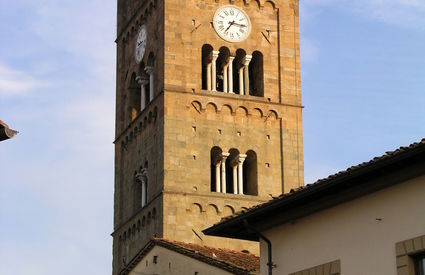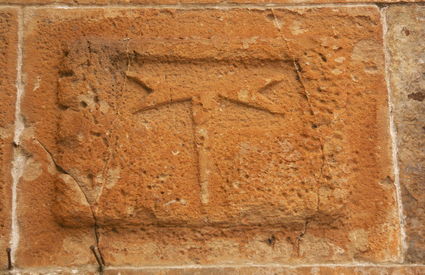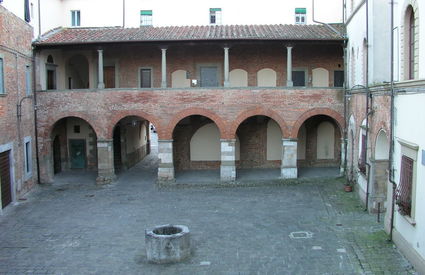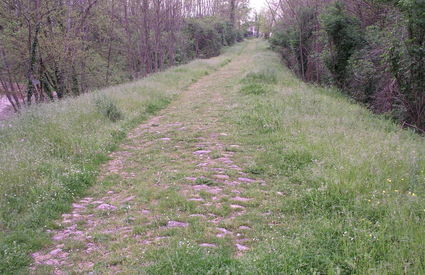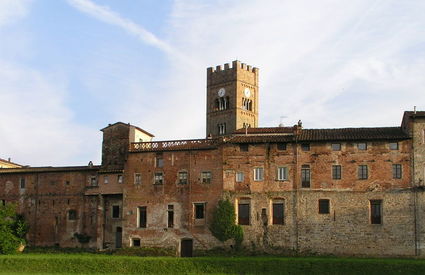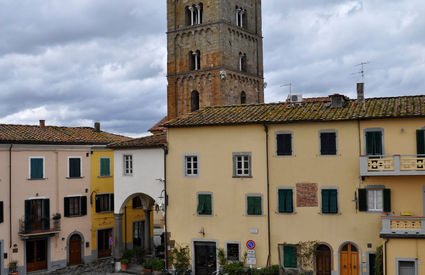Altopascio
In the name of Tau
A journey to the land where all departures begin
In the name of Tau
A journey to the land where all departures begin
Everything began with a Spedale
Its establishment is unknown but it is well-known that since the Middle Ages, the Spedale di Altopascio has welcomed crowds of pilgrims traveling along the Via Francigena. For sure we know that it existed in 1084 and that the order of friars that oversaw it adopted the Tau as their symbol, the Greek letter which recalled the pilgrim’s staff and also alluded to the cross. The Spedale soon grew, and on April 5, 1239, Pope Gregory IX bestowed the Rule upon the Tau friars, making them a religious order.
Since the end of the 11th century, the rich and poor alike would donate their goods to the Order so they could earn a place in heaven. The Tau’s property expanded to territories all along the Francigena: from Cerbaie to Lucca, from Valdinievole to Valdarno, Pistoia and Prato, even all the way to Pisa and Volterra. They also reached areas beyond Tuscany, like Alessandria, Rieti, the dioceses of Naples, Sicily and Sardena. The glory of Altopascio even crossed the Alps, and the friars established branches in Paris and Spain.
The height and end of an Order
Since 1280, the Altopascio bell tower has stood tall at 51 meters, serving as a sign of hope and solace to pilgrims, comforted also by the tolls of the Smarrita, the bell commissioned by Lazzaro Saggina in 1325. But since the end of the 1300s, its memory has been lost in an Altopascio besieged again and again due to their clashes with Florence, Pisa and Lucca. Even the Spedale suffered from the crisis that assailed the small town, and in 1459, the order of the Hospitallers was suppressed by Pope Pius II. In 1773, the Grand Duke Peter Leopold I definitively closed the Spedale and in Altopascio nothing but 40 small farms remained.
The return of the pilgrims
But wayfarers were by now a part of Altopascio’s destiny and after several centuries, they began to return in great numbers to these roads, just like long ago. Today, the town is one of the few places where the atmosphere of the golden years of pilgrimage still breathes; here, this ancient sensitivity has been renewed through a series of initiatives that have made the place a leader in pilgrim hospitality since the beginning of the 1990s. Since then, the municipality’s lodgings have hosted thousands of wayfarers, and just like the Tau Friars offered comfort through a series of codified conventions (even going as far as to create a bread dedicated to the travellers), so today the traditional hospitality lives on in the Calderone (Cauldron), the big celebration bringing together town locals and tourists on July 25, Saint James’s day. For the occasion, a cauldron is paraded through the streets of Altopascio and those who get close enough can procure themselves a nice bowl of soup, in memory of the ancient cauldron of the Spedale friars. Just as back then, the giant pot feeds the pilgrims, once so famous that it was even mentioned by Boccaccio himself, who in the 10th tale of the 6th day of the Decameron, described to Friar Cipolla the filth of Guccio Porco’s clothing, saying his hood was greasy enough to have seasoned the cauldron of Altopascio.


